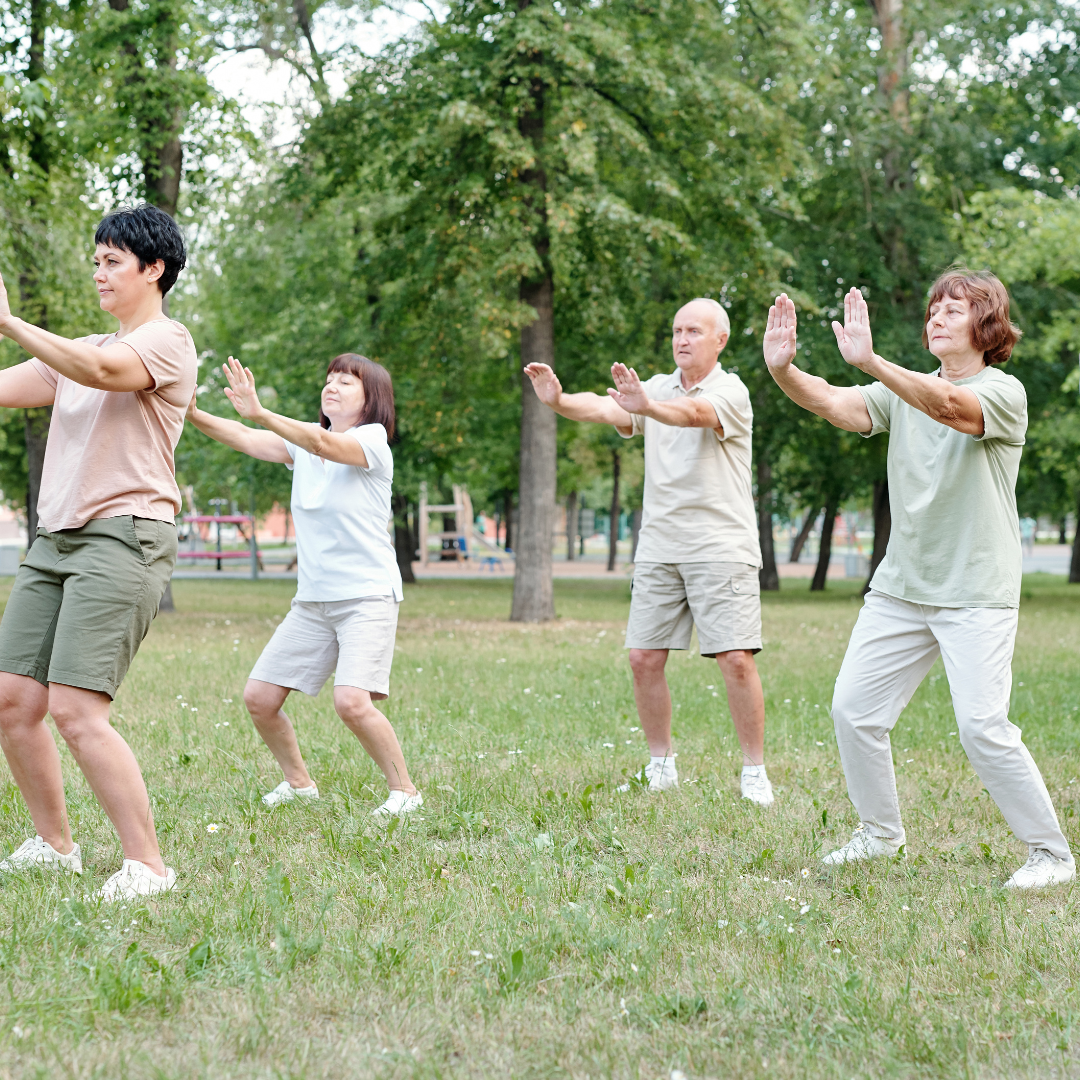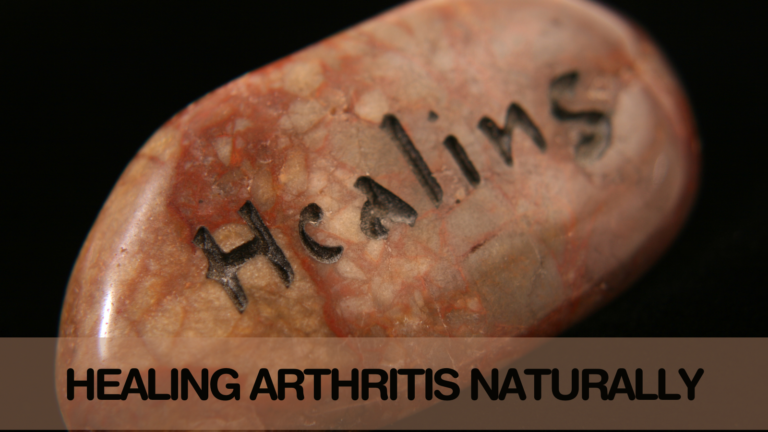Meditation Techniques And Its Health Benefits
Meditation Techniques And Its Health Benefits
Your physical and emotional health will benefit from the sense of calm, peace, and balance that meditation can provide you. You can use it to relax and manage stress by focusing your attention on something tranquil. By meditating, you can develop your ability to retain inner calm and concentrate.
What Is Meditation?
Being a better person or changing one's personality is not the goal of meditation. It is about developing awareness and a sound sense of perspective. You're not attempting to suppress your emotions or thoughts. You're developing your ability to look at things objectively. Additionally, you might finally begin to comprehend them more fully.
History Of Meditation
Finding the actual origin of meditation is equally tricky as determining how long it has been practiced.
The earliest written documents date back to Hindu traditions of Vendatism in India, which date to roughly 1500 BCE. One of the earliest known Indian pathways to spiritual enlightenment is Vendatism, a philosophical system. Then, different types of meditation from Taoist China and Buddhist India in the sixth and fifth centuries BCE are mentioned.
The exact origins are hotly contested, particularly in Buddhist meditation (Wynne, 2007). The sutras of the Pli Canon, which date back to the first century BCE, provide some of the first written accounts of the various states of meditation practiced in India at the time of early Buddhism. A selection of Theravada Buddhist texts is known as the Pili Canon.
Evidence links Judaism to meditation activities, which are said to have been passed down from the religion's earliest traditions. A description of the patriarch Isaac going to “lasuach” in a field can be found in the Torah, which comprises the first five books of the Tanakh, or Hebrew Bible. Most people understand this phrase as a type of meditation (Kaplan, 1985).
How To Start Meditating For Newbies
One of the many advantages of meditation is the reduction of tension, worry, and unneeded thoughts. Read this article to find out more if you want to start meditating.
1. Getting Ready For Meditation
Consider the goals you have for your meditation. People engage in meditation for various reasons, including enhancing their creativity, assisting in visualizing a goal, silencing internal chatter, or establishing a spiritual connection.
Meditation is sufficient if your main objective is to spend a few minutes each day in your body without thinking about all you have to do. Don't make your motivations for meditating too complicated. At its essence, meditation is simply about unwinding and avoiding everyday worries.
Find a quiet place to practice meditation: It's crucial to rid your surroundings of distractions, especially when you're starting. Turn off the television and radio, shut the windows to block street noise, and lock the door to avoid rowdy roommates.
Finding a calm area of your home where you can concentrate on meditation may be challenging if you live with roommates or family. If your housemates are willing to remain silent while you practice meditation, ask them to. Promise to let them know as soon as you're done so they can return to their regular routines.
- A scented candle, a vase of flowers, or some incense might be lovely finishing touches to your meditation.
- To aid in concentration, turn the lights down or off.
2. Use A Cushion For Meditation
Zafus are an additional name for meditation cushions. A zafu is a spherical cushion that enables you to meditate while sitting on the ground. It does not allow you to recline back and lose focus on your energy as a chair does because it lacks a back. Any old pillow or sofa cushion will suffice if you don't have a zafu to prevent soreness during extended periods of cross-legged sitting.
- Feel free to use a chair if you discover that sitting without a chair back bothers your back. For as long as it feels comfortable, keep your back straight.
- Then, lean back until you feel you can do it again.
3. Wear Comfortable Clothing
Avoid wearing constrictive apparel that can tug on you, such as jeans or tight pants, as you don't want anything to wake you up from your meditative thought. Your best approach is to dress in loose, breathable clothing similar to what you might wear to work out or in bed.
4. Pick A Suitable Time
When you become more accustomed to meditation, you may use it to soothe yourself when you feel stressed or overloaded. However, if you're just starting, it could be challenging to focus at first if you're not in the correct frame of mind. When you first begin, meditate when you are already in a state of relaxation, possibly right in the morning or just after you have had time to unwind from school or work.
- Before beginning your meditation, eliminate any potential sources of distraction. If you're feeling peckish, get a quick snack, visit the restroom if necessary, and so on.
- You want to make sure you meditate for a sufficient amount of time, but you also don't want to lose focus by looking at the clock. Set a timer for how long you want to meditate—10 minutes or an hour. You can discover many websites and apps that will time your sessions for you, or your phone may already have a timer built in.
5. Straighten Your Back While You Sit On Your Cushion
The upright position makes it easier to pay attention to your breathing as you consciously inhale and exhale. Try not to slump or lean against a chair's back if it has one. Maintain as much posture.
Put your legs in whatever position seems most comfortable to you. Using a cushion on the ground, you can stretch them out in front of you or cross them underneath you like a pretzel. The most crucial thing is to maintain a straight posture.
6. Concerning What To Do With Your Hands
If holding your hands at your knees while meditating makes you uncomfortable, don't worry about it. We frequently see individuals doing this in the media. Whatever enables you to focus solely on your breathing while clearing your mind is acceptable. You can fold them in your lap or let them hang at your sides.
Tilt your head so that you look down: When you meditate, it doesn't matter if your eyes are open or closed. However, many people find that closing their eyes makes it simpler to block out visual disturbances. In either case, cocking your head to look downward will help you breathe more easily and open up your chest.
7. Set Your Timer
Set your timer for however long you'd like to meditate once you're settled down and prepared to begin. Do not feel obligated to have a transcendental state lasting an hour in the first week. Start with short periods of 3 to 5 minutes, then work your way up to 30 minutes or even more if you'd like.
Keeping your mouth closed when breathing: When meditating, you should breathe in and out via your nose. Even if your mouth is closed, ensure your jaw muscles are at ease. Simply relax; don't clench your jaws or grit your teeth.
8. Focus On Your Breathing
This is the primary goal of meditation. Give yourself something uplifting to concentrate on your breath. Don't try not to think about the things that could stress you out daily. By concentrating solely on your breaths in and out, you'll discover that all other thoughts from the outer world will naturally fade away without you having to think about blocking them out.
- Choose the breathing technique that feels most comfortable to you and focus on that. Some people like to concentrate on the movement of the lungs, while others prefer to consider the passage of air through the nose.
- Perhaps you will concentrate on the sound of your breathing. Just go into a mental space where your attention is confined to one feature of your breath.
Instead of being able to describe it, the objective is to be present with each breath. Don't stress about recalling your feelings or being able to describe the event in the future. Simply take each breath in as it comes. Experience the next breath when it has passed. Avoid thinking about your breathing; just enjoy it with your senses.
9. If Your Focus Wanders, Bring It Back To Your Breathing
Even after practicing meditation for a long time, you may still find that your mind wanders. Later, you'll consider employment, bills, or the errands you need to run. Never panic or try to ignore the outer world when you see it creeping. Instead, slowly bring your attention back to the physical experience of breathing while allowing other thoughts to drift away once more.
- It might be simpler to keep your attention on inhalations than on exhalations. If you find it to be accurate, remember this. Focus on how your breath feels as it leaves your body.
- If you're having difficulties refocusing, try counting your breaths.
10. Be Kind To Yourself
Recognize that it will be challenging for you to maintain attention at first. Don't criticize yourself; this inner dialogue is common among novices. Some even contend that this constant focus on the present is the “practice” of meditation. Furthermore, don't anticipate your life-changing as a result of your meditation practice. It takes time for mindfulness to take effect. Every day, spend at least a few minutes in meditation; if you can, extend your sessions.
Types Of Meditation
The increased need to manage stress amid hectic schedules and demanding lives may be addressed by meditation.
Meditating is no right or wrong method, but it's crucial to discover a routine that works for you.
There are some well-liked forms of meditation:
1. Mindfulness Meditation
The most well-known and extensively studied type of meditation practiced in the West is mindfulness meditation, which has its roots in Buddhist teachings.
You focus on your thoughts as they come and go during a mindfulness meditation session. You don't condemn or identify with the thoughts. You simply keep an eye out and note any patterns.
This exercise combines awareness and concentration. While observing any physiological sensations, thoughts, or feelings, you might find concentrating on anything or your breathing useful.
Due to its simplicity, this style of meditation is suitable for those without an instructor to act as their guide.
2. Chakra Meditation
The goal of this meditation method is to maintain the openness, alignment, and fluidity of the body's primary chakras or energy centers. Chakra meditation can assist in restoring all of them to balance by clearing blocked or out-of-balance chakras, which can cause uncomfortable physical and mental symptoms.
3. Transcendental Meditation
Numerous studies in the scientific community have looked into the practice of transcendental meditation (TM).
Maharishi Mahesh Yogi established TM, which stands for a particular practice intended to quiet the mind and elicit a feeling of serenity and harmony. It is best taught by a trained TM practitioner and involves using mantras.
This technique is for anyone who desires a simple way to experience depth meditation.
4. Spiritual Meditation
Nearly all religions and traditions practice spiritual meditation.
The various forms of spiritual meditation are as varied as the various spiritual traditions worldwide. There are numerous methods of meditation that could be categorized as spiritual meditation in this article.
Spiritual meditation concentrates on strengthening one's connection with a higher power and comprehension of spiritual/religious meaning, according to a 2017 study by a Trusted Source. Examples comprise:
- Christian meditation in prayer
- Dhikr Sufi (remembrance of God)
- Kabbalistic customs of the Jews
You can meditate spiritually at home or in a house of worship. This practice is helpful for people interested in spiritual development and a closer relationship with a higher power or spiritual force.
5. Progressive Relaxation
Progressive relaxation also referred to as body scan meditation is a technique to ease physical tension and encourage relaxation.
This meditation frequently involves gradually contracting and relaxing each muscle group throughout the body.
It can also suggest that you visualize a soft wave gently sweeping through your body to help relax any tension. Before going to bed, people frequently practice this meditation to unwind and relieve stress.
6. Mantra Meditation
Numerous teachings, including those of the Hindu and Buddhist traditions, heavily emphasize mantra meditation. Play a rhythmic sound to help you focus during this meditation. It can be a word, phrase, or sound, with “om” being one of the most popular.
You can say your mantra softly or out loud. You'll become more aware of your surroundings and alert after repeating the phrase. You can achieve deeper states of awareness as a result.
Because it's simpler to concentrate on a word than on your breath, some individuals find mantra meditation enjoyable. Some people appreciate how the sound makes their bodies vibrate. This is a useful exercise for those who prefer repetition and dislike silence.
7. Focused Meditation
Any of the five senses can be used to concentrate during focused meditation.
You may, for instance, concentrate on your breathing, or you could bring in outside factors to assist you in concentrating.
Examples comprise:
- Counting mala beads
- Listening to a gong
- Staring at a candle flame
- Counting your breaths
- Moon gazing
Although this exercise may seem straightforward in theory, it might initially be challenging for beginners to maintain their attention for more than a few minutes.
If your thoughts do stray, just return to the exercise and refocus.
This exercise is perfect for anyone who wishes to improve their focus and attention, as the name implies. This is a type of active meditation where the movement helps you connect more deeply to your body and the moment.
Movement People who find calm in action and wish to increase bodily awareness can consider meditation.
8. Movement Meditation
Although most people associate movement meditation with yoga, this technique can also involve:
- Walking
- Gardening
- Qi gong
- Tai chi
- Other gentle forms of movement

9. Qigong Meditation
This powerful ancient Chinese technique includes using the body's energy corridors, known as “meridians,” to capture energy. During meditation, sending this energy inward is supposed to support the body's ability to heal and function; sending it forth is thought to support the healing of others.
10. Loving-Kindness Meditation
Loving-kindness Compassion, kindness, and acceptance are qualities that can be strengthened via meditation toward both oneself and others.
It usually entails allowing oneself to be open to receiving love from others and wishing loved ones, friends, acquaintances, and all living things well.
This meditation may benefit people who feel angry or resentful since it aims to encourage compassion and kindness.
11. Visualization Meditation
Visualization meditation aims to improve sensations of relaxation, tranquillity, and calmness by imagining uplifting situations, images, or figures.
This exercise requires vividly picturing a scene and including as many details as possible using all five senses. It might also entail thinking of a beloved or respected person to emulate their traits.
Another type of vision meditation involves picturing yourself achieving particular objectives to sharpen concentration and motivate yourself.
Many people practice visualization meditation to elevate their mood, lower stress levels and encourage inner tranquillity.
Benefits Of Meditation
The routine practice of meditation teaches your mind to concentrate and reroute its thoughts.
As more individuals learn about its numerous health advantages, meditation is becoming more and more well-liked.
You can utilize it to become more aware of your surroundings and yourself. Many individuals consider it a method of calming down and improving focus.
Additionally, the practice helps people cultivate other positive traits and emotions, including self-control, a positive view of life, regular sleep patterns, and even an increased tolerance for pain.
1. Reduces Stress
One of the most popular reasons individuals practice meditation is to reduce stress.
According to one review, meditation truly does live up to its reputation for reducing stress. Cortisol levels typically rise in response to both mental and physical stress. Many of the adverse effects of stress are caused by this, including the release of cytokines, which are inflammatory molecules.
These side effects can make it difficult to sleep, encourage worry and melancholy, raise blood pressure, and cause exhaustion and foggy thinking.
In an 8-week study, the “mindfulness meditation” meditation approach reduced the inflammatory response brought on by stress.
Furthermore, research suggests that meditation may alleviate the symptoms of stress-related diseases such as fibromyalgia, post-traumatic stress disorder, and irritable bowel syndrome.
2. Reduces Anxiety
Mindfulness can lower stress levels, leading to decreased anxiety.
According to a meta-analysis involving nearly 1,300 adults, meditation may reduce anxiety. Notably, those with the highest anxiety levels experienced the most potent effects.
One study also found that 8 weeks of mindfulness meditation reduced anxiety symptoms in people with generalized anxiety disorder and raised positive self-statements, boosted stress reactivity, and improved coping.
Another study of 47 people with chronic pain found that an 8-week meditation program led to measurable decreases in pain, anxiety, and depression that lasted for more than a year.
Furthermore, some research suggests that mindfulness and meditation practices may reduce anxiety.
3. Improves Emotional Health
Some forms of meditation can lead to an improved sense of self and a more positive outlook on life. For instance, a review of treatments performed on more than 3,500 adults found that mindfulness meditation lessened the signs of depression.
A study of 18 people found something similar: those who received meditation therapy showed fewer indicators of depression than those in the control group.
Participants in a meditation exercise had fewer negative thoughts in response to unfavourable imagery than those in a control group.
Additionally, cytokines, inflammatory substances released in reaction to stress, can influence mood and result in sadness.
4. Improves Self-Awareness
Self-inquiry meditation, for instance, makes a conscious effort to help you become more conscious of who you are and how you connect with those around you.
You can learn to recognize potentially harmful or self-defeating beliefs through other methods. You may retrain your mental processes to be more constructive as you become more aware of them.
According to an analysis of 27 studies, tai chi practice may be associated with higher levels of self-efficacy, a term used to describe a person's belief in their capacity or ability to overcome challenges.
In a different study, 153 participants who used a mindfulness meditation app for two weeks experienced higher levels of social engagement and fewer signs of loneliness than participants in the control group.
Regular meditation practice may also encourage more creative problem-solving.
5. Extends Out Attention Span
Meditating with focused concentration is like lifting weights for your attention span. Your attention, strength and stamina are improved.
For instance, one study found that when participants listened to a meditation tape while performing a task, they performed with greater accuracy and attention than those in the control group.
Similar studies showed that people who regularly practiced meditation performed better on a visual test and had a longer attention span than those who did not.
Additionally, a review discovered that meditation might alter the neuronal connections in the brain, which leads to anxiety, lack of concentration, and mind wandering. Even a short meditation session every day could be beneficial.
6. Minimizes Memory Loss Due To Aging
Concentration and mental clarity improvements may slow down brain aging.
The meditation method known as Kirtan Kriya uses a mantra or chant and repetitive finger movements to help you focus your thoughts. Studies of elderly persons with memory loss improve performance on neuropsychological tests.
Additionally, preliminary research suggests that various meditation techniques can enhance aged individuals' focus, memory, and mental flexibility.
In addition to reducing usual age-related memory deterioration, meditation can at least partially improve memory in dementia patients.
Additionally, it helps enhance coping and reduce stress in people taking care of relatives with dementia.
7. Possibility To Fight Addiction
By enhancing your self-control and raising your awareness of the triggers for addictive behaviours, the mental discipline you can acquire through meditation may help you overcome dependence.
According to research, meditation may aid individuals in learning to refocus their attention, control their emotions and impulsive behaviours, and develop a more profound knowledge of the reasons behind their actions.
Transcendental meditation practice was connected to lower stress levels, psychological distress, alcohol cravings, and alcohol use after three months, according to a study on 60 patients with alcohol use disorder.
By meditating, you may be able to control your appetite. A review of 14 studies found that practicing mindfulness reduced people's emotional eating and binge eating.
8. Minimizes Pain
Your perception of pain is influenced by your mental state and might become more acute in stressful circumstances.
Some studies suggest that meditation in your routine might help you manage discomfort.
For instance, a review of 38 research indicated that practicing mindfulness meditation could improve mood, lengthen life, and reduce depressive symptoms in those with chronic pain.
According to a significant meta-analysis of research involving nearly 3,500 participants, meditation is linked to more minor discomfort.
Both meditators and non-meditators experienced the same types of pain, but meditators demonstrated a higher level of coping with it and even felt less pain.
9. Improves Mental Health
According to Judson Brewer, MD, Ph.D., associate professor of medicine and psychiatry and head of research at the Center for Mindfulness at the University of Massachusetts, psychologically, “meditation helps us get out of our own way.”
The capacity of meditation to lessen stress, which may cause or exacerbate several serious illnesses, including heart disease, obesity, and even anxiety disorders, is the most significant relationship we have between meditation and overall health.
10. Can Inspire Goodwill
Specific meditation techniques may help you feel and act more positively toward yourself and others.
The practise of loving-kindness meditation, or metta, begins with cultivating pleasant thoughts and sentiments toward oneself.
Through repetition, people learn to extend this forgiveness and kindness to others, starting with close friends before moving on to acquaintances and even adversaries.
This type of meditation has been shown to boost people's compassion for themselves and others in a meta-analysis of 22 research. These advantages were dose-dependent in a trial involving 100 people randomly assigned to a program that included loving-kindness meditation.
In other words, the longer people practiced metta meditation each week, the more happy feelings they had.
Another investigation of 50 college students found that after four weeks of metta meditation practice, pleasant emotions, social relationships, and empathy improved.
Additionally, these advantages appear over time as one practices loving-kindness meditation.
11. Improves Sleep
About half of the population will eventually experience sleeplessness.
Participants in a study comparing mindfulness-based meditation approaches reported less severe insomnia and more uninterrupted sleep than those in the unmedicated control group.
You might be able to control or refocus the racing or unpredictable thoughts that frequently trigger insomnia by honing your meditation skills. Additionally, it can help your body relax, help you release stress, and put you in a tranquil state of mind where you're more likely to go asleep.
12. Lowering Blood Pressure
Meditating can improve physical well-being by lowering heart pressure.
Because the heart needs to work harder over time to pump blood, high blood pressure can harm heart health. High blood pressure also contributes to atherosclerosis, or the narrowing of the arteries, which can result in a heart attack or stroke.
According to a meta-analysis of 12 research with approximately 1000 individuals, meditation can lower blood pressure. Older volunteers and those with more significant blood pressure before the research benefited more.
According to one study, several meditation techniques comparably improved blood pressure. The “fight-or-flight” response boosts awareness in stressful conditions, and the nerve impulses that coordinate heart function, blood vessel tightness, and blood pressure appear somewhat relaxed by meditation.
Conclusion
Anyone can practice meditation to enhance their mental and emotional well-being.
Without specialized tools or memberships, you can do it anywhere. Alternatives include several support groups and meditation classes.
There is a wide range of styles, each with unique advantages and strengths. Even if you just have a few minutes to meditate each day, trying out a technique that suits your objectives is a terrific approach to enhance your quality of life.
I trust you enjoyed this article on the Meditation Techniques And Its Health Benefits. Please stay tuned for more blog posts to come shortly. Take care!
JeannetteZ
>>>Please click here to read my all-inclusive article about A Comprehensive Guide To Healing Naturally<<<
>>>Are you interested in Natural Healing through Herbs? Please click here for my #1 Recommendation<<<
Your Opinion Is Important To Me
Thoughts? Ideas? Questions? I would love to hear from you. Please leave me your questions, experience, and remarks about this article on the Meditation Techniques And Its Health Benefits, in the comments section below. You can also reach me by email at Jeannette@Close-To-Nature.org.
Disclosure
This post may contain affiliate links. As an Amazon Associate and other affiliate programs, I earn from qualifying purchases at no extra cost to you. Read my full affiliate disclosure.
You might also enjoy these blog posts:
The Ultimate Guide To Massage Therapy
Easy Steps To Grow Garlic In A Container
Easy Steps To Grow Lemongrass In A Container
Simple Steps To Grow Artichokes In A Container
Easy Steps To Grow Swiss Cheese Plants In A Container


























